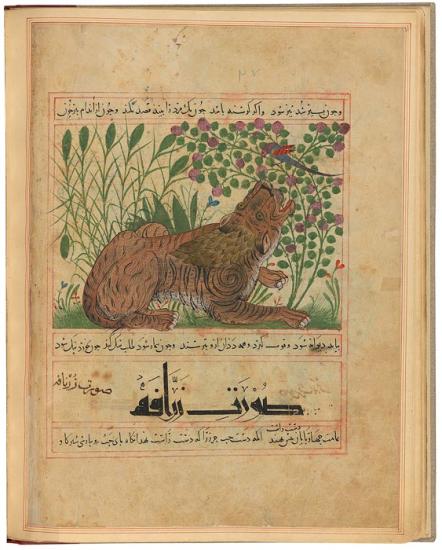
Tiger
Manāfi˓-i ḥayavān (The Benefits of Animals), in Persian, for Shams al-Dīn Ibn Ẓiyā˒ al-Dīn al-Zūshkī
Purchased by Pierpont Morgan, 1912
This illustration appears in the great Persian manuscript Manāfi˓-i ḥayavān (The Benefits of Animals). The recumbent lion raises its head, appearing to converse with the bird in the flowering bush above. The text mentions no medical derivatives of the tiger. Under the reeds are traces of a sketch, in red, of a camel facing left, indicating that the paper was reused.
Natural History and Astrology
The miniatures presented here derive primarily from two extraordinary Islamic manuscripts that depict the natural world and the heavens. The first, Manāfi˓-i hayavān (The Benefits of Animals), is considered one of the ten greatest surviving Persian manuscripts. It dates from the reign of Ghazan Khan (1295–1304), the Mongol ruler who ordered a Persian translation of the book, and concerns the nature and medicinal properties of humans, animals, birds, reptiles, fish, and insects. The other, Matāli˓ al-sa˓āda wa manābi˓ al-siyāda (The Ascension of Propitious Stars and Sources of Sovereign), was commissioned by Sultan Murād III (r. 1574–95), an Ottoman ruler deeply interested in astronomy, cosmology, demonology, poetry, and mysticism.
